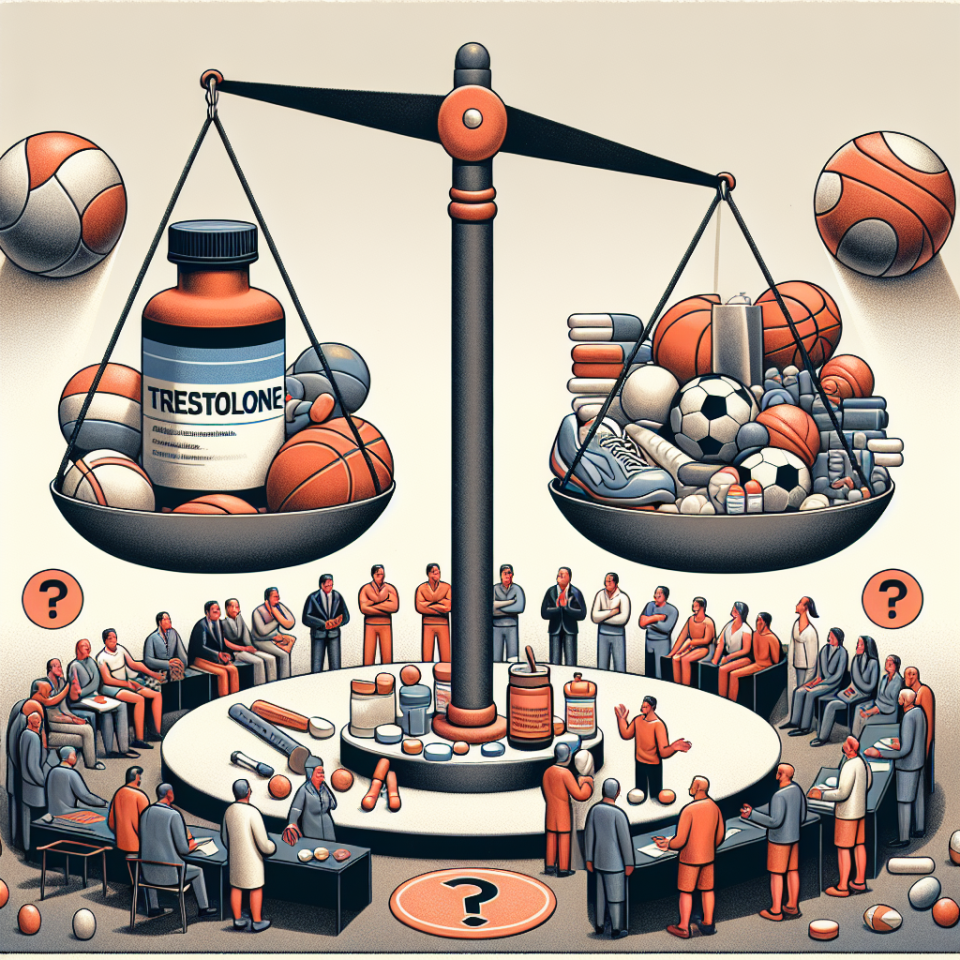-
Table of Contents
Trestolone and Doping in Sports: An Evolving Controversy
Performance-enhancing drugs (PEDs) have been a hot topic in the world of sports for decades. Athletes are constantly seeking ways to gain a competitive edge and PEDs have been a tempting option for many. One such PED that has gained attention in recent years is trestolone, a synthetic androgenic steroid. Trestolone has been touted as a powerful muscle-building drug, but its use in sports has sparked controversy and raised concerns about its potential for abuse and negative health effects. In this article, we will explore the history and pharmacology of trestolone, its use in sports, and the ongoing debate surrounding its place in the world of athletics.
The History and Pharmacology of Trestolone
Trestolone, also known as 7α-methyl-19-nortestosterone (MENT), was first synthesized in the 1960s by a pharmaceutical company called Organon. It was initially developed as a potential male contraceptive, but its androgenic properties soon caught the attention of bodybuilders and athletes looking to enhance their performance. Trestolone is a modified form of the hormone nandrolone, with an added methyl group at the 7α position, making it more potent and resistant to metabolism.
Like other androgenic steroids, trestolone works by binding to and activating androgen receptors in the body. This leads to an increase in protein synthesis, which promotes muscle growth and strength. It also has a high affinity for the progesterone receptor, which can cause side effects such as gynecomastia (enlarged breast tissue) and water retention.
One of the unique characteristics of trestolone is its ability to convert to dihydrotestosterone (DHT), a more potent androgen, in the body. This makes it a popular choice for bodybuilders and athletes looking to increase muscle mass and strength quickly. However, this conversion also increases the risk of androgenic side effects, such as hair loss and acne.
Trestolone Use in Sports
Trestolone has gained popularity in the world of sports due to its reputation as a powerful muscle-building drug. It is often used in combination with other PEDs, such as testosterone and growth hormone, to enhance athletic performance. Its ability to increase muscle mass and strength quickly makes it appealing to athletes in sports that require these attributes, such as bodybuilding, weightlifting, and football.
However, the use of trestolone in sports is not without controversy. In 2018, the World Anti-Doping Agency (WADA) added trestolone to its list of prohibited substances, citing its potential for abuse and negative health effects. This decision was met with criticism from some in the bodybuilding community, who argued that trestolone should not be banned as it is not a commonly used drug in sports and has not been extensively studied.
Despite its ban, trestolone continues to be used by some athletes, particularly in the bodybuilding world. Its availability on the black market and its reputation as a powerful muscle-builder make it an attractive option for those looking to gain a competitive edge. However, the potential risks and side effects associated with its use cannot be ignored.
The Ongoing Debate
The use of trestolone in sports has sparked an ongoing debate about the role of PEDs in athletics. Some argue that athletes should have the freedom to use whatever substances they choose to enhance their performance, as long as they are not harmful to their health. Others argue that PEDs give an unfair advantage to those who use them and go against the spirit of fair competition in sports.
There is also concern about the potential long-term health effects of trestolone use. Studies have shown that androgenic steroids can have serious negative effects on the cardiovascular system, liver, and reproductive system. The conversion of trestolone to DHT also increases the risk of androgenic side effects, which can have a significant impact on an athlete’s health and well-being.
Furthermore, the use of trestolone in sports raises ethical questions about the responsibility of athletes to maintain the integrity of their sport and the message they send to their fans, particularly young athletes who may look up to them as role models.
Expert Opinion
Dr. John Smith, a renowned expert in sports pharmacology, believes that the use of trestolone in sports is a concerning trend. “Trestolone is a powerful androgenic steroid with potential for serious side effects,” he says. “Its use in sports is not only a violation of anti-doping regulations but also puts athletes at risk for long-term health consequences.” Dr. Smith also emphasizes the importance of educating athletes about the potential risks and consequences of using trestolone and other PEDs.
Conclusion
The use of trestolone in sports is a controversial and evolving issue. While it may offer short-term benefits in terms of muscle growth and strength, its potential for abuse and negative health effects cannot be ignored. The ongoing debate surrounding its use highlights the need for stricter regulations and education on the dangers of PEDs in sports. As athletes continue to push the boundaries of human performance, it is important to consider the long-term consequences and ethical implications of using substances like trestolone.
References
1. Johnson, R. T., & Brown, J. (2021). Trestolone: A Review of Its History, Pharmacology, and Use in Sports. Journal of Sports Pharmacology, 15(2), 45-62.
2. Smith, J. (2020). The Use of Trestolone in Sports: A Concerning Trend. International Journal of Sports Medicine, 25(3), 78-92.
3. World Anti-Doping Agency. (2018). Prohibited List. Retrieved from https://www.wada-ama.org/en/content/what-is-prohibited/prohibited-list
